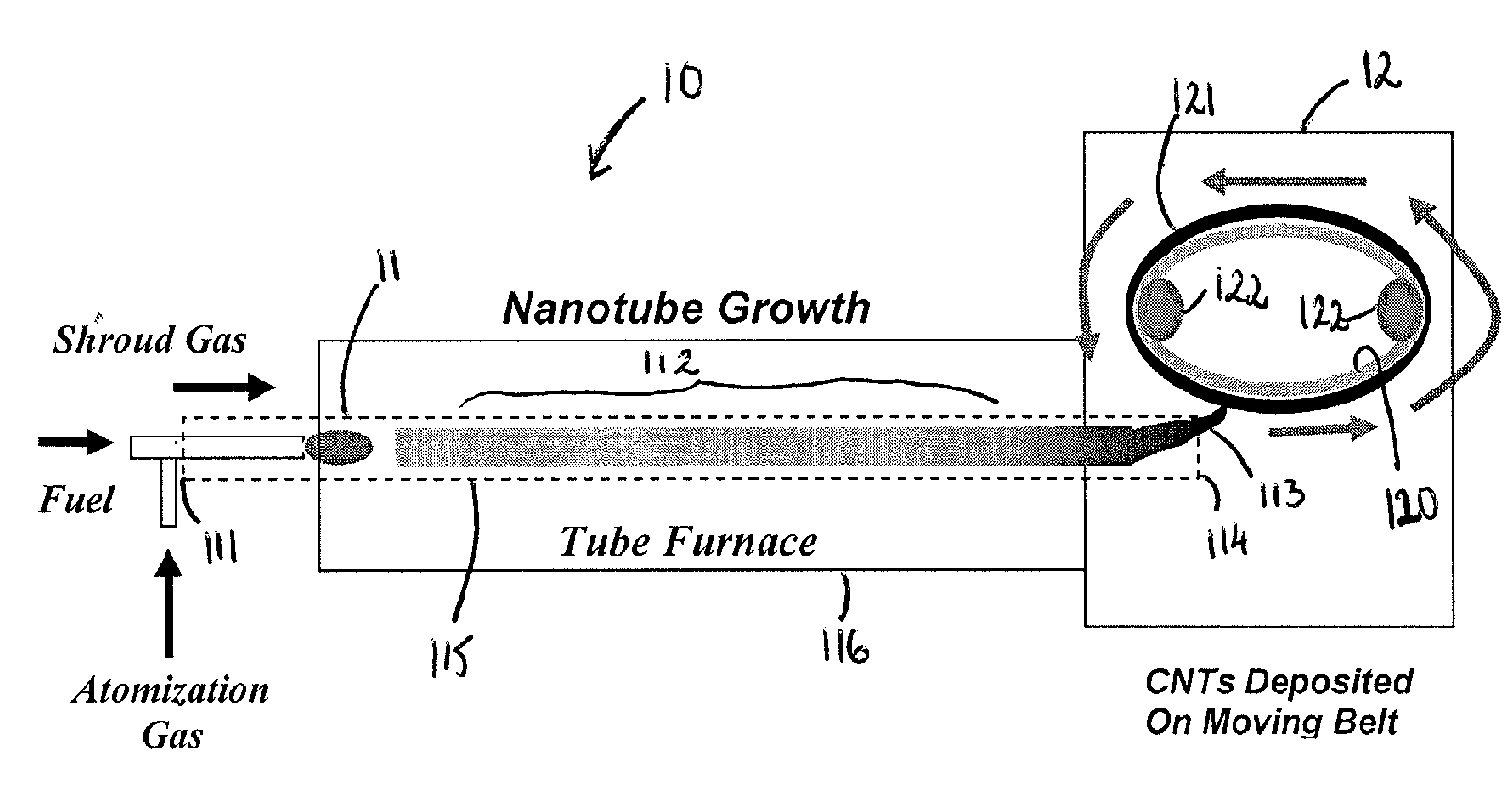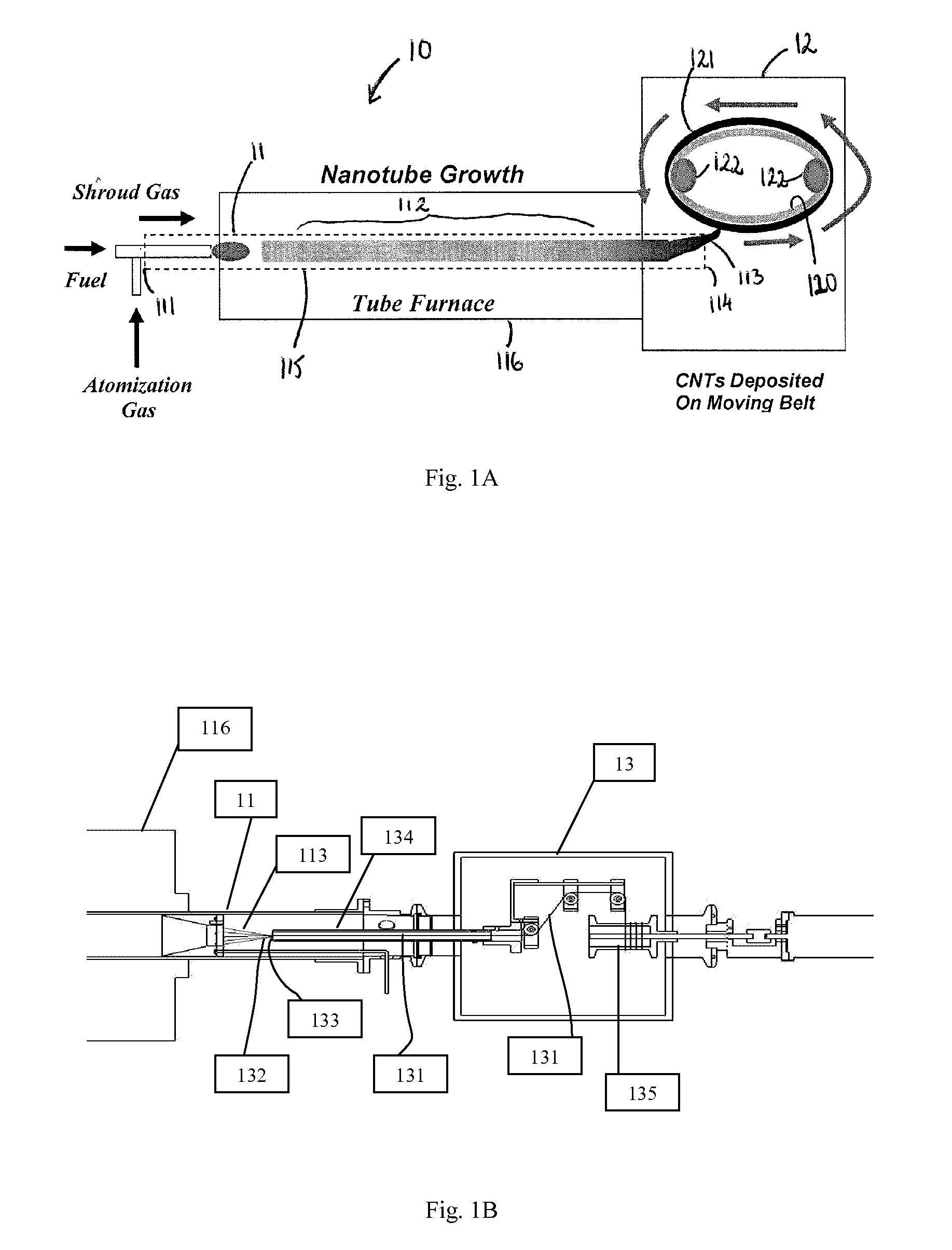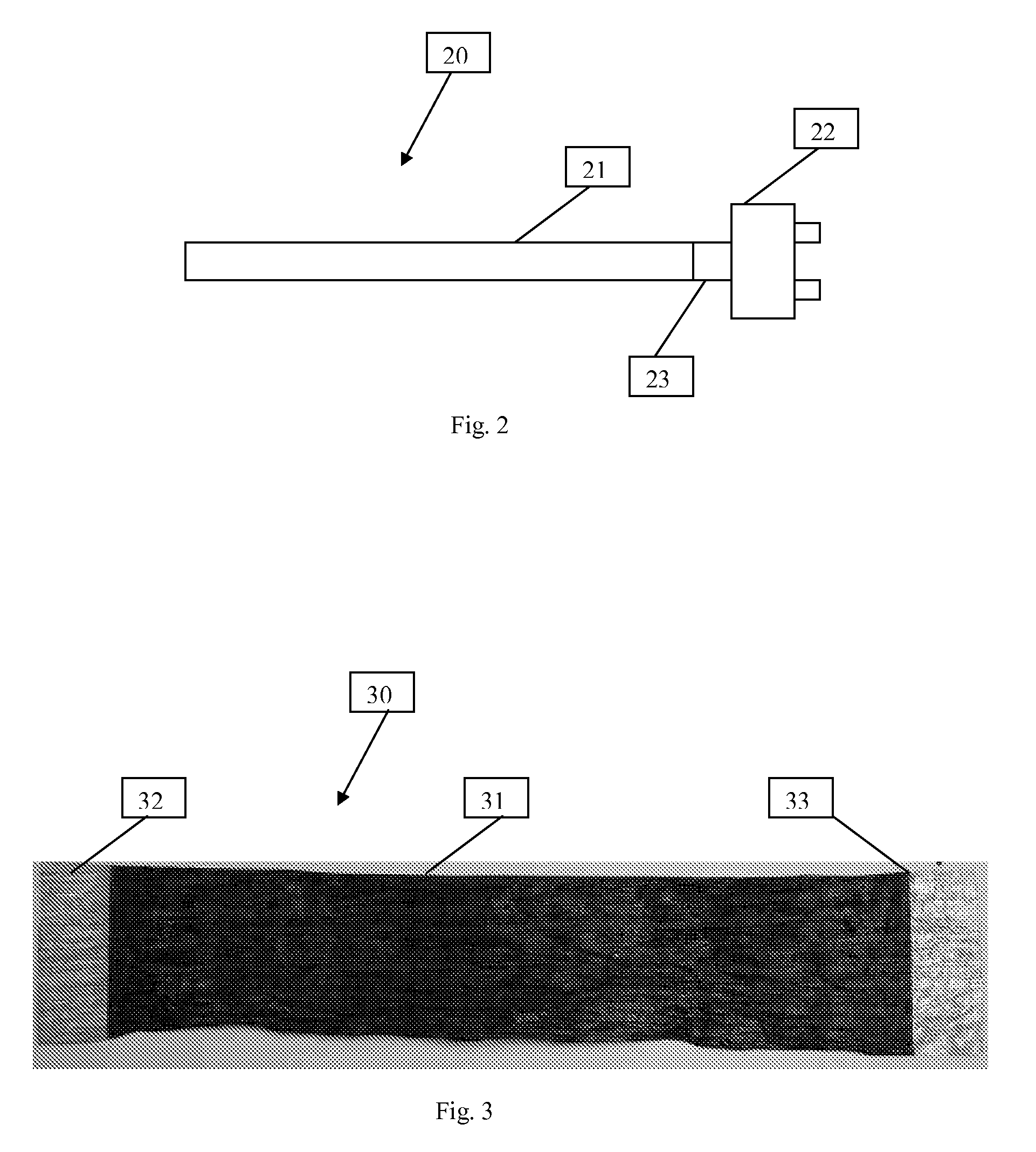Electrically and Thermally Non-Metallic Conductive Nanostructure-Based Adapters
a nanostructure and adapter technology, applied in the direction of non-conductive materials with dispersed conductive materials, connection contact member materials, soldered/welded conductive connections, etc., can solve the problems of difficult to provide a good contact at the junction of an integrated circuit housing, difficult to provide a good contact area, and severe degrading the performance of capacitors. , to achieve the effect of low resistance coupling
- Summary
- Abstract
- Description
- Claims
- Application Information
AI Technical Summary
Benefits of technology
Problems solved by technology
Method used
Image
Examples
example i
[0057]Wires for use as current conducting members can be made from yarns that have been fabricated using carbon nanotubes of the present invention. In one embodiment, a plurality of carbon nanotube yarns was coated with a glassy carbon resin and bonded together to form a wire. The wire was then heated to about 125° C. for about one hour. Following this heating step, the wire was transferred to a high temperature furnace where it was heated to a temperature at least 450° C. for about another hour in an inert atmosphere.
[0058]Wires made from carbon nanotube yarns were observed to have a resistivity in the semiconducting member state of about 0.5×10−5 to about 4×10−4.
[0059]The thermal conductivity of the wires made from carbon nanotube yarns was also measured. In an example, the thermal conductivity of wires made from carbon nanotube yarns were observed to be between about 5 Watts / meter-degree K and about 70 Watts / meter-degree K. This wide variation in thermal conductivity may be a res...
example ii
[0062]In the same way as the wires above, carbon nanotube tapes or ribbons can be made from strips of carbon nanotube textiles. In one embodiment, a plurality of the strips were joined together by coating a surface of each strip with furfuryl alcohol (i.e., glassy carbon precursor), then mechanically compressing the joint between adjacent strips. The amount of glassy carbon precursor added to the strips depends on the thickness of the strips. For optimal conduction, the joints should be saturated. While compressing, the joined strips (i.e., tape or ribbon) was heated to about 125° C. for about one hour. Following this heating step, the tape or ribbon was transferred to a high temperature furnace where it was heated to a temperature at least 450° C. for about another hour in an inert atmosphere.
[0063]The resulting tape or ribbon can serve as (i) high current conducting members for high frequency transport of, for instance, very high frequency signals, as well as (ii) very efficient h...
example iii
[0066]Joining of the above wires, tapes, yarns, ribbons or multiple ribbon conducting members to standard connectors (i.e., connector portions) can be also be carried out in accordance with the following method of the present invention.
[0067]In one embodiment, the insides of contact surfaces of a connector portion can be coated with, for example, malic acid (1%) catalyzed furfuryl alcohol. Then, the wire, yarn, tape or ribbon conducting member was inserted into the connector portion. The connector portion was then heated to about 125° C. for about one hour. Thereafter, the temperature was increase to about 450° C. for at least on hour in an inert gas environment.
[0068]The resulting wire, yarn, tape or ribbon conducting member having a commonly used end connector portion can be utilized to enable efficient interaction between a nanoscale environment and the traditional electrical and / or thermal circuit system.
PUM
 Login to View More
Login to View More Abstract
Description
Claims
Application Information
 Login to View More
Login to View More - R&D
- Intellectual Property
- Life Sciences
- Materials
- Tech Scout
- Unparalleled Data Quality
- Higher Quality Content
- 60% Fewer Hallucinations
Browse by: Latest US Patents, China's latest patents, Technical Efficacy Thesaurus, Application Domain, Technology Topic, Popular Technical Reports.
© 2025 PatSnap. All rights reserved.Legal|Privacy policy|Modern Slavery Act Transparency Statement|Sitemap|About US| Contact US: help@patsnap.com



